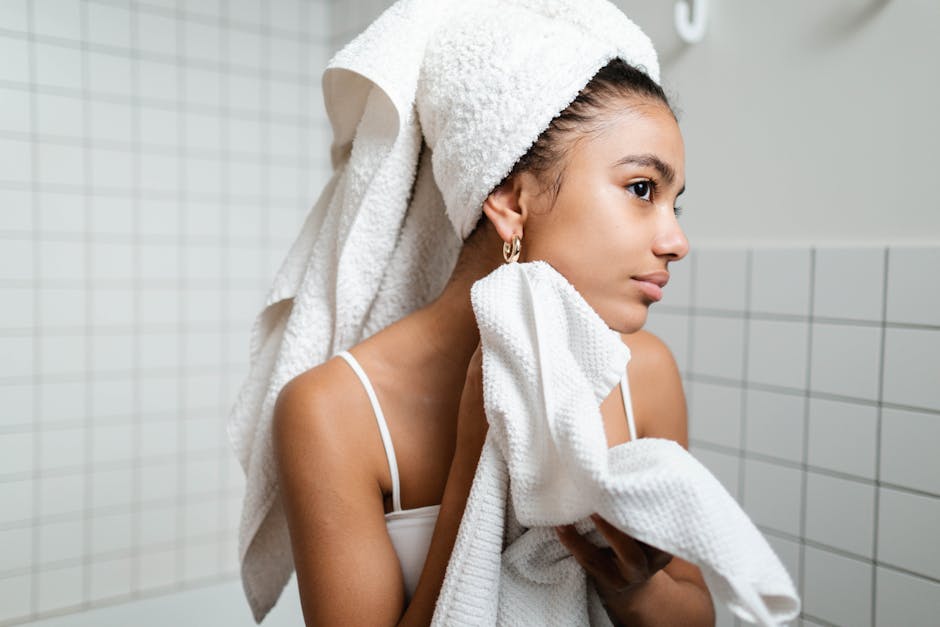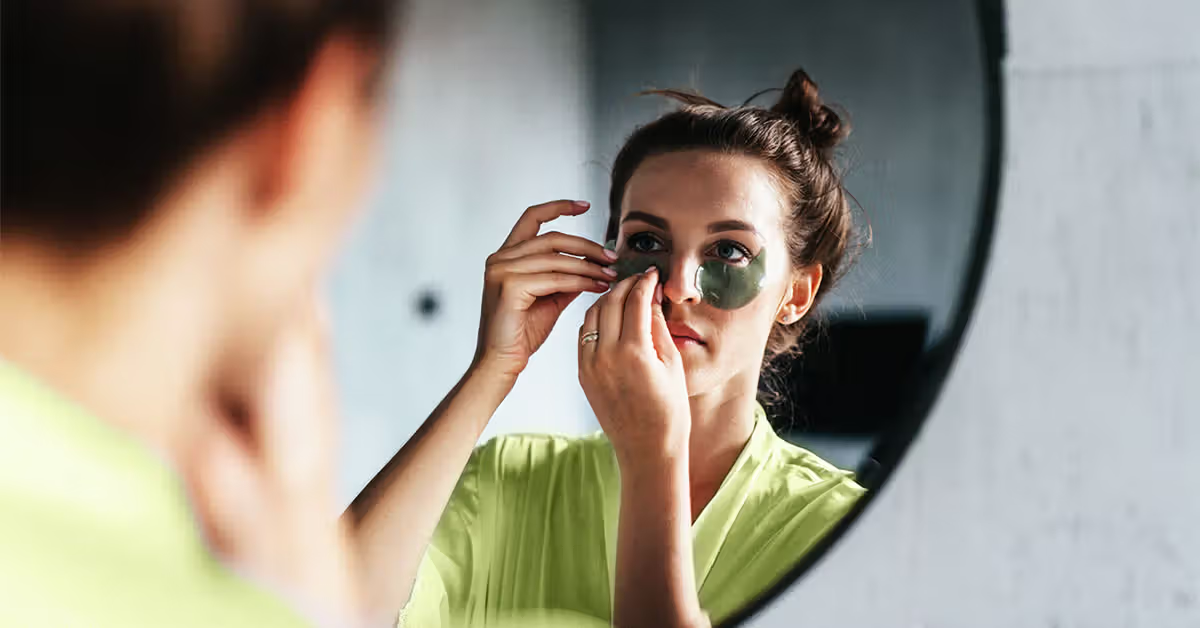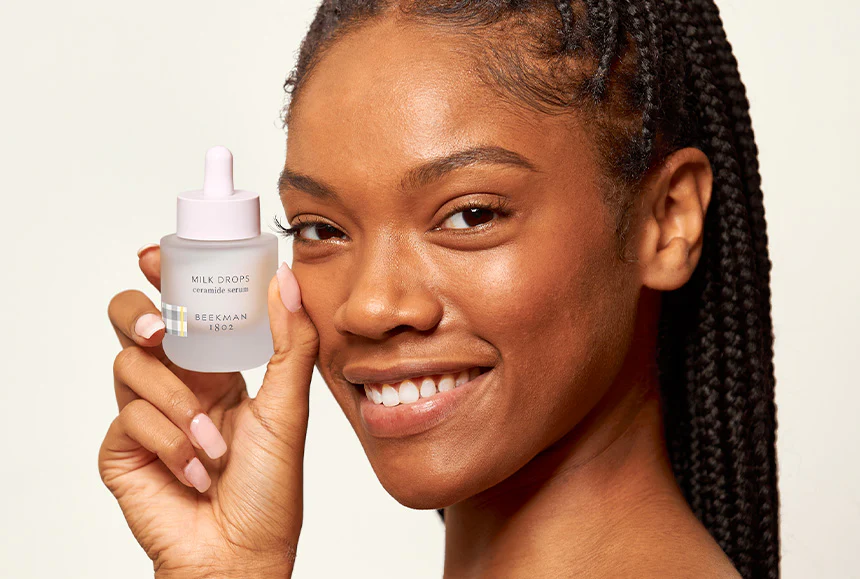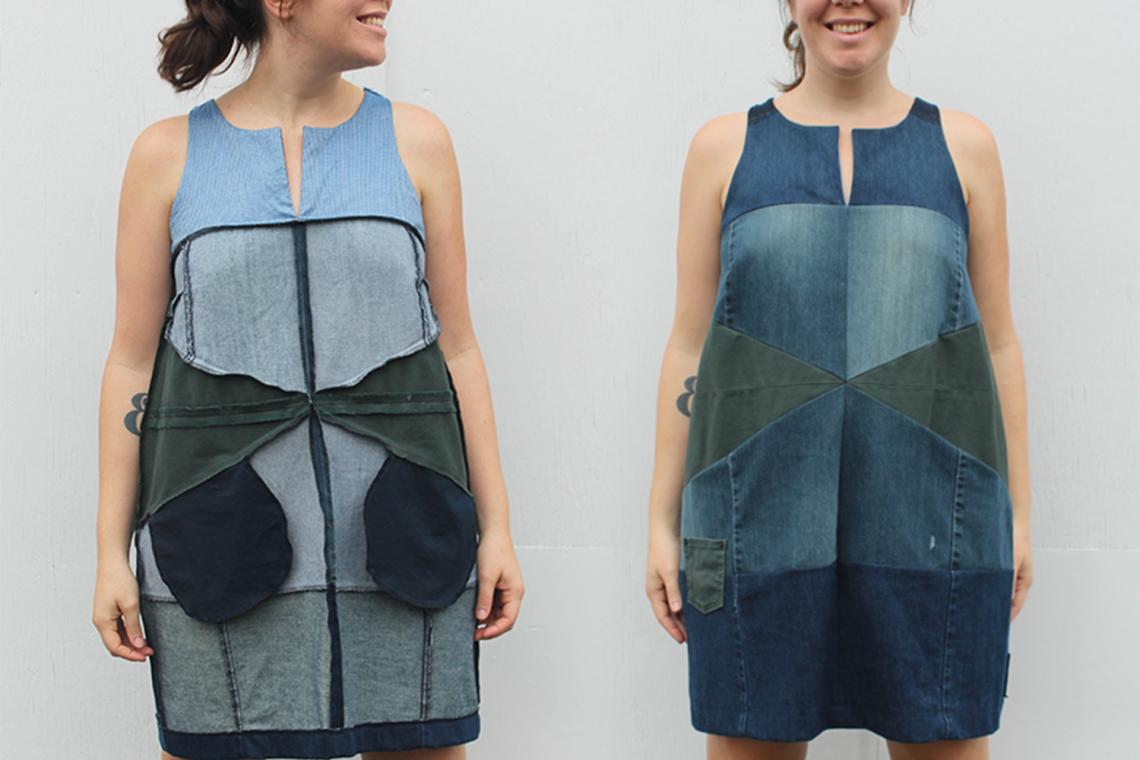Understanding Clean Beauty: Your Path to Safer Skincare
Clean beauty skincare refers to products formulated without potentially harmful ingredients while emphasizing transparency, sustainability, and effectiveness. If you’re looking for safe skincare options, here’s what you need to know:
“The EU bans over 1,300 ingredients from cosmetics, while the USA bans only 11, highlighting stricter safety standards in clean beauty in Europe.”
What Makes Skincare “Clean”:
* Free from parabens, phthalates, sulfates, and synthetic fragrances
* Transparent about all ingredients used
* Environmentally conscious packaging and practices
* Ethically sourced ingredients
* Often (but not always) plant-based formulations
Clean beauty isn’t just a trend – it’s a response to growing concerns about the long-term effects of chemical exposure through our daily skincare routines. When conventional products can contain endocrine disruptors, potential carcinogens, and environmental pollutants, making the switch to clean formulations becomes a meaningful choice for both personal and planetary health.
The clean beauty movement challenges brands to do better by eliminating unnecessary toxins while still delivering results. As Emma Lewisham, a pioneering clean beauty founder states, it’s about “marrying science and nature in the most sophisticated way.”
Many clean beauty brands go beyond ingredient safety to accept sustainability through refillable packaging, carbon-positive practices, and ethical sourcing. The movement represents a holistic approach to beauty that considers your wellbeing alongside environmental impact.
Whether you’re dealing with sensitive skin, looking to prevent future issues, or simply wanting to reduce your chemical exposure, clean beauty offers thoughtful alternatives to conventional skincare.

What Is Clean Beauty Skincare?
The term “clean beauty” has exploded in popularity, but with so many buzzwords floating around, it can be hard to know what it really means. At Beyond Beauty Lab, we believe in cutting through the marketing noise to give you the real story.
Definition & Core Principles
At its heart, clean beauty skincare is built on four essential pillars:
- Safety First: Products formulated without ingredients that raise red flags for health concerns
- Transparency: Honest, complete disclosure about what’s in the bottle and where it comes from
- Plant-Based Innovation: Using nature’s power, backed by scientific validation
- Results-Driven: Delivering real, visible benefits without compromising your health
As one of our favorite industry experts puts it: “Clean beauty is not about being perfect—it’s about being better and making conscious choices that prioritize both human health and environmental wellbeing.”
This movement didn’t appear overnight. It grew organically as more of us started asking questions about what we’re putting on our skin day after day. When you consider that the average person uses 9 personal care products with 126 unique ingredients daily, it’s no wonder we’re concerned about what’s soaking into our bodies.
Clean vs Natural, Organic, Vegan, Cruelty-Free
One of the biggest sources of confusion is how “clean” differs from all those other beauty terms you see on packaging. Let’s break it down:
| Term | What It Means | What It Doesn’t Guarantee |
|---|---|---|
| Clean | Free from ingredients with potential health concerns | May not be all-natural or organic |
| Natural | Contains ingredients from nature | May still include concerning synthetic ingredients |
| Organic | Ingredients grown without synthetic pesticides | May contain problematic preservatives |
| Vegan | Contains no animal-derived ingredients | May include synthetic chemicals of concern |
| Cruelty-Free | Not tested on animals | Doesn’t address ingredient safety or sourcing |
A product can be natural but not clean (think: problematic essential oils that cause irritation), or clean but not entirely natural (some safe synthetic ingredients can be part of clean formulas). These terms represent different values, and clean beauty skincare specifically focuses on eliminating potentially harmful ingredients above all else.
Why Clean Beauty Skincare Matters for Your Health
Your skin is your largest organ, and it doesn’t just sit there looking pretty—it absorbs much of what you put on it. Clean beauty skincare addresses several important health concerns:
Your daily exposure to endocrine disruptors like parabens and phthalates can mimic hormones in your body, potentially throwing your natural systems out of balance. What seems like a small amount in one product becomes significant when you’re using multiple products daily for years—this cumulative exposure is what clean beauty aims to reduce.
By choosing cleaner options, you’re practicing preventive wellness, reducing your total toxic load before problems arise.
The health impacts aren’t equal for everyone, either. Research has revealed troubling disparities in beauty product exposure. Studies found that women of color often face higher exposure to problematic ingredients, with one study showing “1.8× higher diethyl phthalate levels in African Americans” and “30× higher mercury levels in Dominican women using skin-lighteners.”
Effectiveness Compared to Conventional
“But does it actually work?” This is the question we hear most often, and the answer is a resounding yes. The myth that clean products can’t perform as well as conventional ones simply doesn’t hold up to scrutiny.
For sensitive skin, goat milk (a clean beauty superstar) is clinically proven to transform irritated complexions. Beekman 1802’s Golden Booster Vitamin C Brightening Serum uses amla berry, which provides an impressive 20 times more vitamin C than oranges. And CBD has been shown to be a powerful antioxidant—even more potent than vitamins C and E in skincare formulations.

Today’s clean beauty skincare formulations leverage incredible advances in green chemistry and botanical science. The results speak for themselves. As one happy customer told us: “Just after 2 weeks my skin looks younger, more radiant, and diminished fine lines.”
Clean beauty isn’t just a feel-good choice—it’s increasingly becoming the smart choice for both your skin and your overall wellbeing.
Ingredients to Avoid & Superstar Actives
Ever wonder what actually makes a product earn that “clean” label? It’s all about knowing both the villains and heroes of the skincare world.
The Never List
When we talk about clean beauty skincare, we’re talking about formulas that skip the problematic players. At Beyond Beauty Lab, we encourage avoiding these common offenders:
The skincare world has its share of troublemakers – parabens lurking as preservatives that mess with your hormones, phthalates hiding in fragrances and linked to reproductive problems, and sulfates that strip away not just dirt but your skin’s natural moisture too.
Then there’s formaldehyde and its releasing cousins – literal carcinogens hanging out in your beauty products. Synthetic fragrances deserve special caution since they can contain dozens of undisclosed chemicals behind that innocent word “fragrance” on the label.
Even seemingly innocent ingredients like phenoxyethanol (a preservative) can trigger irritation in sensitive skin, while mineral oil and petroleum derivatives create an artificial barrier that suffocates your skin rather than nurturing it.
As for those chemical sunscreen filters like oxybenzone? They’re raising serious eyebrows for potential hormone disruption – not exactly what you want from something you apply daily.
Sephora’s Clean at Sephora program highlights this issue perfectly, noting their standards “exclude over 50 potentially harmful ingredients, including parabens, sulfates, phthalates, and mineral oils.”
While a single application might not hurt you, think about this: most of us apply multiple products every single day for decades. That’s where the real concern lies – in that long-term, cumulative exposure. Scientific research on endocrine disruptors continues to reveal concerning connections between these ingredients and health issues.
Best Clean Beauty Skincare Ingredients
The beauty of clean beauty skincare is finding powerful alternatives that actually work:
Vitamin C (especially from nutrient-dense sources like amla berry) brightens your complexion while fighting off environmental damage. Niacinamide is a true multitasker – calming inflammation, regulating oil production, and strengthening your skin barrier all at once.
Plant-based bakuchiol has become the gentler retinol alternative that sensitive skin types have been dreaming of – supporting collagen production without the irritation. Peptides work like little messengers, signaling your skin to boost its own collagen and elastin.
Your skin barrier will thank you for ceramides, which work like the mortar between your skin cells, locking moisture in where it belongs. The microbiome revolution has brought us prebiotics and probiotics that nurture your skin’s natural ecosystem for better balance.
Goat milk isn’t just trendy – it’s packed with gentle lactic acid and nutrients that even the most sensitive skin can tolerate. And don’t overlook plant oils and butters – they’re not just fillers but deliver essential fatty acids your skin craves.
What makes these ingredients special isn’t just their natural origin – it’s the science backing them up. Studies show bakuchiol delivers anti-aging benefits comparable to retinol but with significantly less irritation – perfect for those who want results without the redness.
Environment & Packaging Impact
True clean beauty skincare looks beyond what touches your skin to consider what touches our planet:
The movement is pushing for microplastic-free formulas that won’t wash down your drain and into our oceans. Brands are prioritizing biodegradable ingredients that break down naturally instead of persisting in the environment.
Ethical sustainable sourcing ensures ingredients are harvested in ways that protect biodiversity and support communities. Perhaps most visibly, responsible packaging is changing how products arrive in your bathroom – from recyclable materials to innovative refill systems.
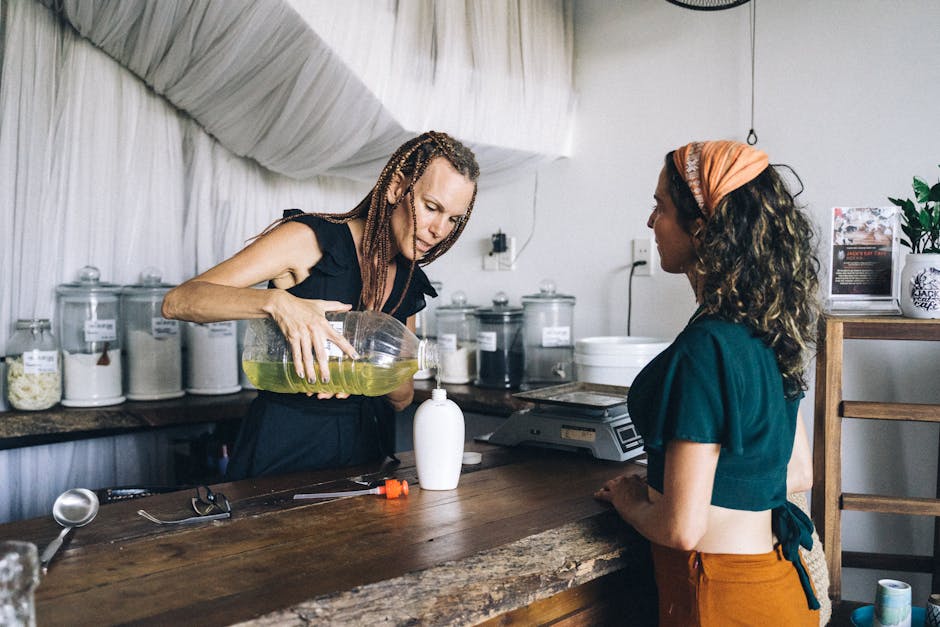
Emma Lewisham exemplifies this holistic approach, earning the distinction of being “the first in the beauty industry to be endorsed in writing by iconic environmentalist Dr. Jane Goodall” for pioneering circular packaging models that dramatically reduce waste.
When we choose clean beauty skincare, we’re not just protecting our own health – we’re voting for a beauty industry that respects our entire ecosystem. And that’s a beautiful thing indeed.
How to Choose Truly Clean Products (and Dodge Greenwashing)
With clean beauty skincare becoming more popular, many brands are jumping on the bandwagon without actually changing their formulas. This practice—called “greenwashing”—can make shopping confusing and frustrating.
Reading Ingredient Lists Like a Pro
The best way to see through marketing hype is to learn how to read product labels. It’s easier than you might think:
Ingredients appear in order of concentration, with the highest amounts listed first. Pay attention beyond just the first few ingredients, since potentially problematic preservatives often hide near the end of the list.
Watch out for sneaky terms like “fragrance” or “parfum”—these can legally conceal dozens of undisclosed chemicals. Similarly, phrases like “derived from” or “naturally derived” often disguise heavily processed ingredients that barely resemble their natural origins.
Here’s a friendly tip: Don’t panic when you see complex scientific names. Sometimes those intimidating chemical names are just the official terms for perfectly harmless plant ingredients. For example, Butyrospermum Parkii is simply shea butter!
Certifications & Standards to Trust
When in doubt, look for trusted third-party certifications that do the ingredient vetting for you:
MADE SAFE® certification involves rigorous screening for health impacts, while EWG VERIFIED™ products meet the Environmental Working Group’s strict safety criteria. For those focused on natural formulations, COSMOS Organic/Natural is a respected European standard, and Leaping Bunny ensures truly cruelty-free practices. Even retailers are helping—Clean at Sephora excludes over 50 concerning ingredients.
These certifications matter because they require actual testing and verification. As we finded in our research, “All Freegirl Skincare products are 100% natural, organic, vegan, gluten-free, and MADE SAFE® certified, meaning every ingredient is vetted by scientists for safety.” That’s the kind of transparency we love to see!
Spotting Greenwashing Red Flags
Become a greenwashing detective by watching for these common tricks:
Vague claims like “non-toxic” or the absurd “chemical-free” (remember, water is a chemical!) should raise eyebrows. Be skeptical when you see products covered in leaves and green imagery while their ingredients tell a different story.
Some brands will prominently feature one clean ingredient while the formula contains plenty of problematic ones. Others make meaningless “free from” claims—like shampoo “free from motor oil” (which would never be in shampoo anyway!).

Perhaps the biggest red flag is when brands don’t fully disclose their ingredients on packaging or their website. What are they hiding?
As Clean at Sephora wisely advises: “Be skeptical of claims such as ‘chemical-free,’ ‘toxin-free,’ and ‘preservative-free.'” These terms aren’t regulated and often function as pure marketing rather than meaningful information.
The good news? Once you know what to look for, spotting truly clean beauty skincare becomes second nature. Your skin (and the planet) will thank you for taking the time to look beyond the pretty packaging.
Clean Beauty Skincare Routines for Every Skin Type
Building an effective clean beauty skincare routine isn’t one-size-fits-all. Your skin has unique needs that deserve personalized attention. Let’s explore how to create the perfect clean regimen for your specific skin type.
Sensitive & Redness-Prone Routine
If your skin flushes easily or reacts to new products, you need gentle ingredients that calm and strengthen your natural barrier.
For your morning routine, start with a soothing goat milk cleanser that won’t strip your skin. Follow with an alcohol-free toner containing aloe or chamomile to reduce inflammation. Apply a calming serum with ceramides or niacinamide to strengthen your barrier, then lock it all in with a fragrance-free moisturizer rich in fatty acids. Always finish with a mineral zinc oxide sunscreen – your sensitive skin will thank you for avoiding chemical filters.
In the evening, begin with a gentle oil or balm cleanser to melt away makeup and sunscreen without scrubbing. A hydrating essence with prebiotics will support your skin’s microbiome, followed by a repairing serum with centella asiatica or bakuchiol (if your skin tolerates it). End with a rich moisturizer packed with ceramides and nourishing plant oils to repair while you sleep.
“Goat milk is clinically proven to transform sensitive skin,” notes recent research, “making it a powerful ingredient in clean skincare for those with redness, dryness, breakouts, and wrinkles.”
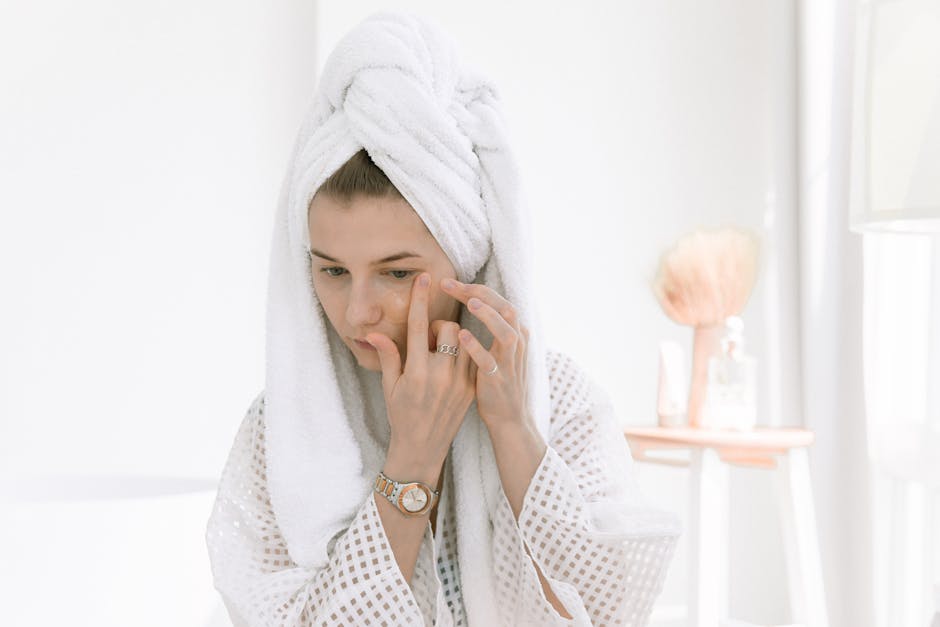
Oily & Acne-Prone Routine
Here’s a surprise – oily skin needs hydration too! The key is choosing the right lightweight, non-comedogenic formulations.
Start your morning with a gentle foaming cleanser containing salicylic acid or tea tree oil to manage excess oil. A balancing toner with witch hazel or green tea helps control shine without over-drying. Apply a niacinamide or zinc PCA serum to regulate oil production, then a lightweight gel moisturizer that won’t clog pores. Finish with a matte-finish mineral sunscreen formulated specifically for oily skin.
Your evening routine should begin with a double cleanse – first an oil cleanser to break down makeup and sunscreen, followed by a salicylic acid cleanser to deep clean pores. Apply a treatment serum with bakuchiol or gentle fruit acids to promote cell turnover, spot-treat any active breakouts with tea tree or sulfur, and finish with a light moisturizer containing hyaluronic acid and plant-based squalane for balanced hydration.
One innovative clean beauty brand explains their approach: “Utilizing our in-depth analysis we identify the best ingredients and products for your unique skin, every time,” combining data from “25k scientific reports, clinical studies, toxicity reports & 8M data points.”
Mature Skin “Better-Aging” Routine
I prefer the term “better-aging” to “anti-aging” – it’s about enhancing your skin’s natural beauty at every stage of life.
For morning, choose a creamy cleanser that preserves your skin’s natural oils. Follow with an antioxidant-rich vitamin C serum (amla berry is particularly potent) to brighten and protect from environmental damage. A peptide treatment supports collagen production, while a nourishing moisturizer with ceramides strengthens your skin barrier. The most crucial step? A broad-spectrum mineral SPF – truly the most effective anti-aging product available.
Your evening routine should begin with a thorough oil cleanse to remove the day’s buildup. Apply a hydrating essence with hyaluronic acid or glycerin, followed by bakuchiol (nature’s gentle retinol alternative) to support cell renewal. A rich night cream with peptides and plant oils provides intensive overnight nourishment, and don’t forget an eye cream with caffeine and peptides to address the delicate eye area.
As one clean beauty skincare brand notes, “Amla berry provides 20× more vitamin C than oranges, to target uneven skin tones and dark spots,” making it an exceptional ingredient for mature skin concerns.
The beauty of clean skincare is that you can address your skin’s needs without compromising your health. Whether you’re dealing with sensitivity, oiliness, or signs of aging, there’s a clean routine that will work beautifully for you.
Trends & Innovations Shaping Clean Beauty
The clean beauty skincare world is absolutely buzzing with excitement these days. It’s not just about what’s in your products anymore—it’s about reimagining the entire beauty experience from formulation to packaging.
Sustainable Packaging Breakthroughs
Remember when all skincare came in heavy plastic jars? Those days are thankfully fading as brands accept earth-friendly alternatives:
“I used to feel guilty about my skincare empties piling up,” shares one Beyond Beauty Lab community member. “Now with refillable options, I’ve cut my bathroom waste by almost 70%!”
Brands like Emma Lewisham are leading the charge with refill pouches that dramatically reduce carbon emissions. Meanwhile, innovative companies are exploring packaging made from algae that you can literally toss in your home compost bin. Glass, aluminum, and paper are making big comebacks as plastic-free champions.
What’s particularly exciting is the rise of circular programs—where your empty containers get collected, cleaned, and reused instead of ending up in landfills. With beauty industry waste exceeding a staggering 100 billion units annually, these innovations aren’t just nice-to-haves; they’re absolute necessities.

Data-Driven Personalization
Remember the days of guessing which products might work for your skin? That’s becoming as outdated as flip phones, thanks to smart technology:
AI-powered skin analysis tools can now scan your face and identify exactly what your skin needs—and what it doesn’t. Some advanced platforms are aggregating data from “25,000 scientific reports, clinical studies, toxicity reports & 8 million data points” to match you with your perfect clean beauty skincare routine.
The most exciting part? These tools consider everything from your skin microbiome to your local climate and pollution levels. Your skin in humid Miami needs different support than it would in dry Denver, and today’s personalized clean beauty takes that into account.
“I wasted so much money on products that weren’t right for me,” one customer shared. “Having a routine that’s actually built for my specific skin concerns has been life-changing—and my bathroom cabinet is much less cluttered!”
Bioengineered & Upcycled Ingredients
Here’s where science and sustainability create pure magic. Today’s clean beauty skincare innovations prove you don’t need harmful chemicals to get results:
Lab-grown actives deliver powerful benefits without environmental impact. Think of them as the perfect intersection of science and nature—bioidentical ingredients created with minimal resources.
The upcycling trend is particularly heartwarming. Those grape seeds left over from wine production? They’re packed with antioxidants perfect for skincare. Coffee grounds from your morning brew? They make excellent exfoliants. One person’s food waste becomes another’s beauty treasure.
Microbiome science is perhaps the most advancement. By nurturing the beneficial bacteria that naturally live on your skin, these formulations support your skin’s ecosystem rather than disrupting it. Prebiotics, probiotics, and postbiotics work with your body instead of against it.
As Emma Lewisham beautifully puts it, nature is “the world’s most powerful bioengineer.” The future of clean beauty skincare isn’t about rejecting science—it’s about using it to work harmoniously with our bodies and our planet.
This new generation of clean beauty proves you don’t have to choose between effectiveness, health, and sustainability. The innovations happening today are giving us all three, wrapped in increasingly eco-friendly packaging. The future of beauty isn’t just clean—it’s brilliant.
Frequently Asked Questions about Clean Beauty Skincare
Is “clean” a regulated term?
No, “clean” isn’t regulated by the FDA or any government agency in the United States. This can be confusing when you’re trying to make better choices! Each brand or retailer essentially creates their own definition of what “clean” means to them.
This is exactly why third-party certifications like MADE SAFE® or EWG Verified are so valuable when shopping for clean beauty skincare. These independent organizations provide consistent, verifiable standards that go beyond marketing claims.
At Beyond Beauty Lab, we believe clean beauty means products free from ingredients with evidence of potential harm, made with transparency and environmental consideration. We look beyond buzzwords to the substance of what’s actually in your products.
Are clean beauty skincare products safe for sensitive skin?
Many people with sensitive skin find that switching to clean beauty skincare is a game-changer! These products typically avoid common irritants like synthetic fragrances and harsh preservatives that can trigger reactions.
That said, just because something is natural doesn’t automatically mean it’s gentle. Essential oils, while wonderful for many people, can actually be quite reactive for those with sensitive skin. Mother Nature can be potent too!
If you have sensitive skin, look for clean products specifically formulated for your skin type. Goat milk-based formulations are particularly beneficial – research shows they’re “clinically proven to transform sensitive skin” by supporting your skin’s natural barrier.
Always patch test new products, even clean ones, before applying them to your entire face. A little test behind your ear can save you from a full-face reaction.
How can I transition my routine without wasting products?
You don’t need to throw everything away and start fresh! A gradual transition to clean beauty skincare is better for both your wallet and the planet:
Start with your daily staples – the products that stay on your skin all day (like moisturizers and serums) or cover large areas (like body lotion). These have the most significant impact on your overall exposure to ingredients.
Use up your existing products rather than discarding them, unless they’re causing irritation or other issues. This reduces waste and gives you time to research better alternatives.
Replace one product at a time so you can identify what works best for your unique skin. This method also helps you pinpoint any particular ingredients that might not agree with you.
If you have unopened products you no longer want to use, consider donating them to organizations like Project Beauty Share, which provides personal care products to women and families in need.
The journey to cleaner beauty is just that – a journey. Every small step counts, and being mindful about your choices is what matters most. Your skin (and the planet) will thank you for making the switch, even if it happens one product at a time.
Conclusion
The journey to clean beauty skincare isn’t a destination—it’s an ongoing trip of learning and making better choices. As science evolves and research deepens, our understanding of what’s truly safe and sustainable will continue to grow too.
At Beyond Beauty Lab, we firmly believe that looking good should never come at the cost of feeling good. Your skin deserves products that nourish rather than potentially harm it. The clean beauty movement represents a refreshing shift toward honesty, earth-friendly practices, and thoughtfully created formulations in an industry that hasn’t always put your wellbeing first.
Perfection isn’t the goal here. Even small steps toward reducing unnecessary chemical exposure can make a meaningful difference for both your skin health and our planet. Maybe you start by swapping out your daily moisturizer for a clean alternative, or perhaps you begin paying closer attention to ingredient lists on your next shopping trip. Each mindful choice creates positive ripples.
Clean beauty skincare isn’t just about what you put on your skin—it’s about voting with your wallet for the kind of beauty industry you want to support. When you choose products made with integrity and transparency, you’re sending a powerful message that these values matter. It’s been beautiful to watch how consumer demand for cleaner options has pushed even conventional beauty giants to reconsider their formulations and practices.
The clean beauty journey is personal, and what works wonderfully for someone else might not be right for your unique skin. Trust your skin’s response over flashy marketing claims, and give yourself grace as you steer this space. Some days you’ll make perfectly “clean” choices, and other days you might reach for that conventional product you’ve always loved—and that’s completely okay.
For more guidance on your clean beauty journey, explore Beyond Beauty Lab’s clean beauty resources and join our community of thoughtful beauty enthusiasts who are figuring it out together, one product at a time.
After all, beauty should be about feeling good in your skin—both literally and figuratively. When you choose clean beauty skincare, you’re choosing to care for yourself and our shared home in one beautiful act.

